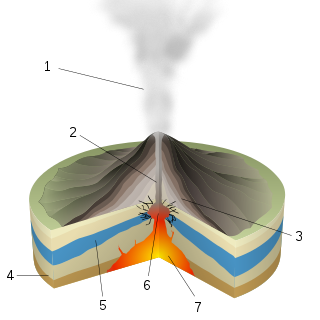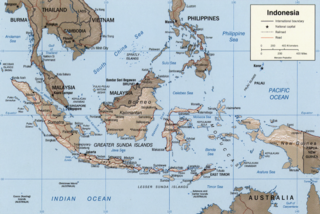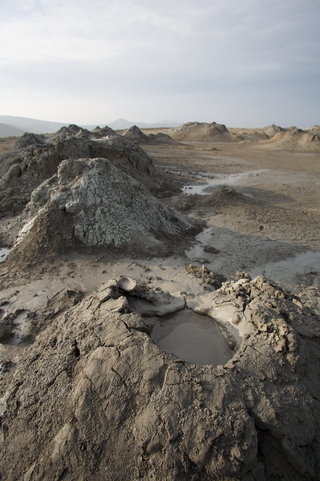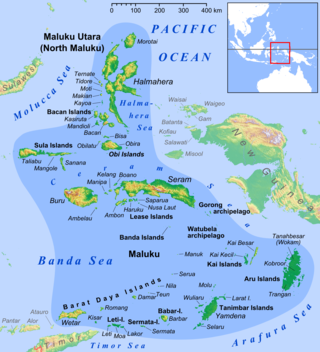| Topeng Sahabat | ||||
|---|---|---|---|---|
 | ||||
| Studio album by | ||||
| Released | 2005 | |||
| Genre | Rock, Alternative Rock | |||
| Label | Aquarius Musikindo | |||
| J-Rocks chronology | ||||
| ||||
Topeng Sahabat is the debut studio album by Indonesian rock band J-Rocks, released on 2005 in Indonesia by Aquarius Musikindo.
| Topeng Sahabat | ||||
|---|---|---|---|---|
 | ||||
| Studio album by | ||||
| Released | 2005 | |||
| Genre | Rock, Alternative Rock | |||
| Label | Aquarius Musikindo | |||
| J-Rocks chronology | ||||
| ||||
Topeng Sahabat is the debut studio album by Indonesian rock band J-Rocks, released on 2005 in Indonesia by Aquarius Musikindo.
All tracks are written by J-Rocks
| No. | Title | Length |
|---|---|---|
| 1. | "Lepaskan Diriku" | 3:57 |
| 2. | "Kuingin Kau Untukku" | 4:22 |
| 3. | "Entah Bagaimana" | 3:25 |
| 4. | "Into The Silent" | 3:00 |
| 5. | "Topeng Sahabat" | 4:53 |
| 6. | "Ceria" | 3:53 |
| 7. | "Cahaya-Mu" | 4:27 |
| 8. | "Berharap Kau Kembali" | 4:31 |
| 9. | "Selamat Tinggal Kekasihku" | 4:01 |
| 10. | "Mestinya Kuakhiri Semua" | 3:45 |
| 11. | "Kono Mune Ni" | 4:30 |

Sulawesi, also known as Celebes, is an island in Indonesia. One of the four Greater Sunda Islands, and the world's 11th-largest island, it is situated east of Borneo, west of the Maluku Islands, and south of Mindanao and the Sulu Archipelago. Within Indonesia, only Sumatra, Borneo, and Papua are larger in territory, and only Java and Sumatra are more populous.

Timor is an island at the southern end of Maritime Southeast Asia, in the north of the Timor Sea. The island is divided between the sovereign states of East Timor in the eastern part and Indonesia in the western part. The Indonesian part, known as West Timor, constitutes part of the province of East Nusa Tenggara. Within West Timor lies an exclave of East Timor called Oecusse District. The island covers an area of 30,777 square kilometres. The name is a variant of timur, Malay for "east"; it is so called because it lies at the eastern end of the Lesser Sunda Islands. Mainland Australia is less than 500 km away, separated by the Timor Sea.

Mount Tambora, or Tomboro, is an active stratovolcano in West Nusa Tenggara, Indonesia. Located on Sumbawa in the Lesser Sunda Islands, it was formed by the active subduction zones beneath it. Before 1815, its elevation reached more than 4,300 metres high, making it one of the tallest peaks in the Indonesian archipelago.

In geology, rock is any naturally occurring solid mass or aggregate of minerals or mineraloid matter. It is categorized by the minerals included, its chemical composition, and the way in which it is formed. Rocks form the Earth's outer solid layer, the crust, and most of its interior, except for the liquid outer core and pockets of magma in the asthenosphere. The study of rocks involves multiple subdisciplines of geology, including petrology and mineralogy. It may be limited to rocks found on Earth, or it may include planetary geology that studies the rocks of other celestial objects.

Ambon Island is part of the Maluku Islands of Indonesia. The island has an area of 743.37 km2 (287.02 sq mi) and is mountainous, well watered, and fertile. Ambon Island consists of two territories: the city of Ambon to the south and various districts (kecamatan) of the Central Maluku Regency to the north. The main city and seaport is Ambon, which is also the capital of Maluku province, while those districts of Maluku Tengah Regency situated on Ambon Island had a 2020 Census population of 128,069. By mid 2023 those populations were estimated to have become 354,052 and 128,754 respectively, resulting in an all-island population of 482,806.

A phreatic eruption, also called a phreatic explosion, ultravulcanian eruption or steam-blast eruption, occurs when magma heats ground water or surface water. The extreme temperature of the magma causes near-instantaneous evaporation of water to steam, resulting in an explosion of steam, water, ash, rock, and volcanic bombs. At Mount St. Helens in Washington state, hundreds of steam explosions preceded the 1980 Plinian eruption of the volcano. A less intense geothermal event may result in a mud volcano.

The Sunda Arc is a volcanic arc that produced the volcanoes that form the topographic spine of the islands of Sumatra, Nusa Tenggara, Java, the Sunda Strait, and the Lesser Sunda Islands. The Sunda Arc begins at Sumatra and ends at Flores, and is adjacent to the Banda Arc. The Sunda Arc is formed via the subduction of the Indo-Australian Plate beneath the Sunda and Burma plates at a velocity of 63–70 mm/year.

A mud volcano or mud dome is a landform created by the eruption of mud or slurries, water and gases. Several geological processes may cause the formation of mud volcanoes. Mud volcanoes are not true igneous volcanoes as they do not produce lava and are not necessarily driven by magmatic activity. Mud volcanoes may range in size from merely 1 or 2 meters high and 1 or 2 meters wide, to 700 meters high and 10 kilometers wide. Smaller mud exudations are sometimes referred to as mud-pots.

Chinese fishing nets are a type of stationary lift net in India and Indonesia. They are fishing nets that are fixed land installations for fishing. While commonly known as "Chinese fishing nets" in India, the more formal name for such nets is "shore operated lift nets". Huge mechanical contrivances hold out horizontal nets of 20 m or more across. Each structure is at least 10 m high and comprises a cantilever with an outstretched net suspended over the sea and large stones suspended from ropes as counterweights at the other end. Each installation is operated by a team of up to six fishermen. While such nets are used throughout coastal southern China and Indochina, in India they are mostly found in the Indian cities of Kochi and Kollam, where they have become a tourist attraction. This way of fishing is unusual in India and almost unique to the area, as it was introduced by Chinese explorers who landed there in the 14th century. Indeed, one interpretation of the city name Kochi is ‘co-chin', meaning ‘like China.’

Kisar, also known as Yotowawa, is a small island in the Southwestern Moluccas in Indonesia, located to the northeast of Timor Island. The island now forms two districts within the Southwest Islands Regency of Maluku Province. South Kisar District was previously called Kecamatan Pulau Pulau Terselatan and at one time included the larger Roma or Romang Island further north, but this with its own outliers was subsequently split off to form its own district. The rest of the island forms the North Kisar District within the regency. It is one of the 92 officially listed outlying islands of Indonesia. The principal town is Wonreli, with 6,652 inhabitants at the 2010 Census.

Granite Mountain is a 7,628-foot (2,325 m) mountain located in Yavapai County, Arizona that covers roughly 12 square miles (31 km2). It was once known as Mount Gurley, for the first governor of the Arizona Territory, John A. Gurley. Its southwest face has a sheer granite cliff approximately 500 feet high that is one of the best locations for rock climbing in the state of Arizona. It is located in the Granite Mountain Wilderness, which is managed as a part of the Prescott National Forest. The mountain stands at the northern end of the Sierra Prietas, and borders Skull Valley on the west, on the northwest by the Santa Maria Mountains, and east by the Williamson Valley.

Candi Asu is part of the Sengi complex built in the 8th and 9th centuries. It is a Hindu temple lying in Magelang Regency, Central Java. It is nestled in between Mount Merapi and Mount Merbabu volcanoes and near the road from Mungkid to Boyolali.

Located in the western Pacific Ocean near Indonesia, the Molucca Sea Plate has been classified by scientists as a fully subducted microplate that is part of the Molucca Sea Collision Complex. The Molucca Sea Plate represents the only known example of divergent double subduction (DDS), which describes the subduction on both sides of a single oceanic plate.
J-Rocks is an Indonesian rock band formed in 2003. It consists of Iman, Sony, Wima and Anton (drums). Their music is heavily influenced by Japanese rock bands. J-Rocks fans are called J-Rockstars.

Shoshonite is a type of igneous rock. More specifically, it is a potassium-rich variety of basaltic trachyandesite, composed of olivine, augite and plagioclase phenocrysts in a groundmass with calcic plagioclase and sanidine and some dark-colored volcanic glass. Shoshonite gives its name to the shoshonite series and grades into absarokite with the loss of plagioclase phenocrysts and into banakite with an increase in sanidine. Shoshonite was named by Iddings in 1895 for the Shoshone River in Wyoming. Textural and mineralogical features of potash-rich rocks of the absarokite-shoshonite-banakite series strongly suggest that most of the large crystals and aggregates are not true phenocrysts as previously thought but are xenocrysts and microxenoliths, suggesting a hybrid origin involving assimilation of gabbro by high-temperature syenitic magma.

Road to Abbey is the first EP by Indonesian rock band J-Rocks released in 2009. It was recorded at the famous Abbey Road Studios in the United Kingdom. This album marked J-Rocks as the first Indonesian band ever to record there.

Igneous rock, or magmatic rock, is one of the three main rock types, the others being sedimentary and metamorphic. Igneous rocks are formed through the cooling and solidification of magma or lava.

Spirit is the second studio album by Indonesian rock band J-Rocks, released on 2007 in Indonesia by Aquarius Musikindo.

On February 20, 2008, an earthquake with a moment magnitude of 7.4 struck off the coast of Sumatra at a hypocentre depth of 26 km. The earthquake had an epicenter located on the island of Simeulue, northwest from Sinabang, a small town on the island. Three people were killed and an additional 25 seriously injured as a result of the earthquake.